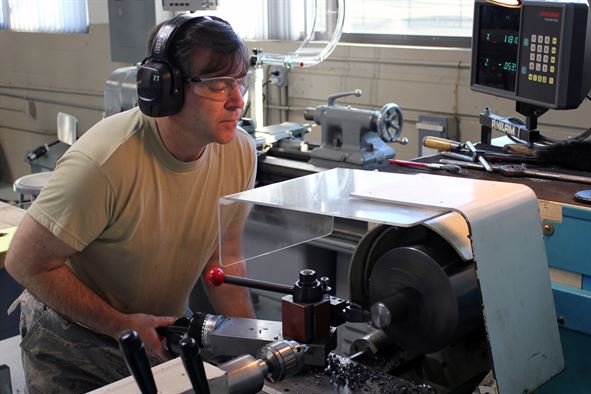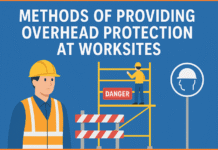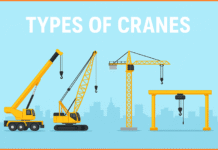Contents
Twelve characteristics, design principles, specifications, basic requirements or good guarding practice for machine guarding are:-
- With its primary purpose of protection, it should also facilitate the work it should be convenient, reliable arid not hampering the work or rate of production.
- It should fully satisfy the legal provision is prescribed it should confirm the standards, be a complete guard at incomplete or giving any access to the part to be protected. It should be as close as possible.
- It should allow for oiling, inspection, adjustment, and repair. If it repairs opening for this purpose, it should be easily and quickly replaceable.
- It should be suitable and effective for the machine. It should not weaken the machine.
- It’s would be the withstand wear, shock, vibration long use with minimum maintenance required. This becomes more important and if it factors becomes more important.
- If dusting is possible as in case of the machine of wood, rubber, brass, cast iron, etc. Apart from the guard, a dust suction device should also be fitted as a special guarding.
- It should be of proper material and construction it should well fitted, fire and co-resistance material is preferable.
- It should be free from a self hazard such a sharp, nails, splinters, more opening noise, vibration, etc.
- It should be inter-locking type, the machine will not start till it is not closed and soon if it is open.
- If a visual watch of operation is necessary, it should be transparent and yet durable.
- It should fulfill a special requirement depending upon its purpose distance guard must immediately trip the machine, It may be difficult to fulfill all these requirements provide sufficient protective distance, the Trip guard must immediately trip the machine, etc. It may fulfill all these requirements but it is desirable that safety engineers must guards by keeping above points in mind. If possible to provide guard without interfering production, safety should be preceded over production similarly when complete protection is not incomplete, protection should prefer to no protection.
- It should be fail-shape if it fails or be the stop the machine or at least it gives a warning (alarm to stop the machine)
Types of Guard:
Machine safety:
- Safety by construction – A shaft end or any part without nip, spoke, nail or protruding projection moving at very slow speed, any sliding or link mechanism moving at very slow speed without danger of trapping or crushing, a power-operated sliding door which will stop or return at touch are some of the examples of safety by construction.
- Safety by position – When dangerous parts are so situated by height, depth or position that it is normally difficult to touch them they are called safe by position overhead transmission machinery, dangerous parts out of reach because of height or covered by some structure so as to prevent access or contact, are generally called safe by possible.
- Built by safety
- Safety by machine controls
- Safety by precaution and maintenance
- Safety by guarding prime mover
Transmission Parts and points of operation:
Fix guard of fencing
- Totally enclosure
- With limited excess
- With adjustment excess
- Distance or barrier guard
Inter-lock Guards
- Mechanical interlocking
- Electrical interlocking
- Trip guard
- Control guard
Automatic Guards
- Mechanical type sweep know or puss away guard
- Photoelectric cell type
Safety Devices
- To hand control
- Optical sensor
- Electromagnetic sensor
- Mechanical feed (conveyor)
- Feed tools (tong, magnetic device)
- Non-repeat device
- Pedal guard
Thus machine guarding is one of the ways for machine safety and first two modes of safety by construction and safety by position are equally important. They are explained below in brief:
Safety by Construction:
A shaft end or any part without nip, spoke, nail or protruding projection moving at very slow speed, any sliding or link mechanism moving at very slow speed without danger of trapping or crushing a power-operated sliding door which will stop or return at touch are some of the examples of safety by construction. Such unguarded slow-moving parts without risk are considered safe by construction. Because of high production rate and dangerous cutting shaping operation required, this type of slow-moving machinery is hardly possible. Even then safe construction of machines must always be aimed at least outer or exposed part must be safe.
Built-in-safety should not be understood as safety by construction. The dangerous moving parts enclosed in the casing so that no separate guard is required are an example of built-in-safety. Here speed, nip or the sharp edge of moving parts are dangerous if the casing is removed therefore their construction is unsafe and safety is built-in by providing a solid enclosure so that the moving parts are neither visible nor exposed.
Safety by position when dangerous parts are so situated by height, depth or position that it is normally difficult to touch them, they are called safe by position. Overhead transmission machinery dangerous parts out of reach because of height or covered by some structure so as to prevent access or contact are generally called safe by possible.
However, this concept does not provide full safety. Unpredictable behavior of a person or touching because of cleaning by broomstick can still cause an accident. Therefore decision regarding safe by position should be thought twice with all considerations.
Feed openings where access is possible and the guard is not possible should be made safe by providing gravity, conveyor or remote control feeding. This is also a way of safety by position. Hopper depth should be sufficient so that extended arm cannot touch the dangerous part.





